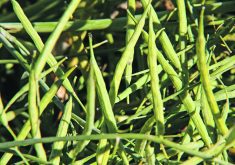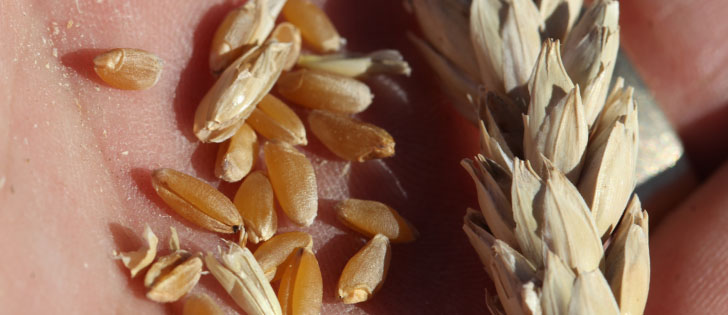Thanks to warm, dry weather at the end of August and the beginning
of September, analysts are increasing their yield forecasts and crop
prices are falling.
In Canada, hopes are rising about beating the frost.
In the United States, three analytical firms last week forecasted bin busting crops.
Informa, Allendale and Linn Group now forecast record U.S. soybean and corn crops.
A record soybean crop was expected because of this year’s seeded
Read Also

Gene editing digs deeper space in Canadian plant breeding
More Canadian research into crop variety development is incorporating gene editing, and one researcher notes that Canada’s regulatory approach to gene editing will help drive innovation
acreage increase but previously the corn forecast was for a second
place finish.
Informa sees a 13.01 billion bushel corn crop, based on an
average yield of 162.6 bu. per acre. Allendale sees 13.13 billion bu. with an
average yield of 164.08 bu. Linn Group forecasts a 13.02 billion bu. harvest and 162.7 bu. yield.
The U.S. Department of Agriculture’s August corn yield estimate is 159.5 bu. per acre and it predicted a 12.8 billion bu. crop.
Last year, the average corn yield was 153.9 bu. and in 2007 it was 151.1 bu.
In soybeans, Informa forecasts a 3.305 billion bu. crop and an average yield of 43.1 bu.
Allendale sees a 3.309 billion bu. crop and average yield of 43.1 bu.
Linn Group forecasts 3.304 billion bu. of production and a 43 bu. average yield.
USDA’s soybean crop forecast is at
3.199 billion bu. with a yield of 41.7 bu.
If corn yields top 162 bu. per acre, how in the world did they do it?
Last spring, analysts focused on seeding delays and reduced
fertilizer applications, leading them to talk about smaller than
average yields at harvest.
After the poor spring, the weather in the Midwest turned ideal
through the summer and current expectations of a mild September make up
for the late seeding.
But Potash Corp. of Saskatchewan estimates that U.S. fertilizer consumption dropped by 20 percent from the previous year.
Either the fertilizer use estimates are wrong or there was a good supply of residual nutrients in the soil.
PotashCorp points out that American farmers have removed more
nutrients from fields than they have applied for the past few years and
suggests the practice can’t continue indefinitely without losing yield.
However, U.S. farm net income is also down, leading some to
speculate that American producers will have less money to spend on
inputs for the 2010 crop.
But that is an issue for next year. For now, the market has lost its anxiety about frost and last week was in freefall.
From the opening Aug. 31 to the close of trade Sept. 4, the nearby
Chicago soybean futures contract fell 15.5 percent, corn fell 6.5
percent and Chicago wheat fell 4.5 percent.
Winnipeg canola fell seven percent and barley about three percent.
The negative attitude was reinforced by the stock market where
investors and traders began to think that stock price values were
getting overly optimistic and outdistancing the real pace of economic
recovery.
Also pressuring Canadian crop prices was the strong Canadian dollar that
traded at more than 92 cents US Sept. 4.














